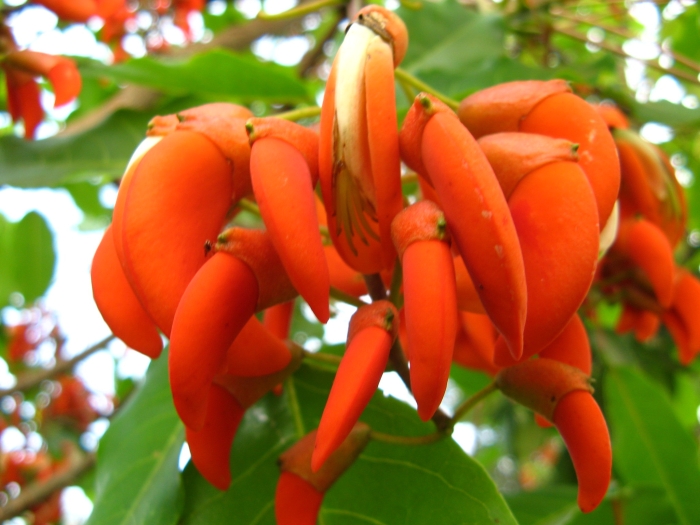Brazilian Coral Tree
(Erythrina falcata)
Brazilian Coral Tree (Erythrina falcata)
/
/

mauro halpern
CC BY 2.0
Image By:
mauro halpern
Recorded By:
Copyright:
CC BY 2.0
Copyright Notice:
Photo by: mauro halpern | License Type: CC BY 2.0 | License URL: https://creativecommons.org/licenses/by/2.0/ | Uploader: mauro halpern | Publisher: Flickr |







































Estimated Native Range
Summary
Erythrina falcata, commonly known as Brazilian Coral Tree, is an evergreen to semi-deciduous tree native to the coastal forests and savannas of South America, particularly in Brazil. It can grow to a height of 25-40 feet (8-12 meters) and a width of 20-40 feet (6-12 meters). The Brazilian Coral Tree has a distinctive appearance with a spreading canopy and green, heart-shaped leaves. Its most striking feature is the vibrant red, coral-like flowers that bloom in winter and spring, attracting hummingbirds and other pollinators. The bark is smooth and gray, and the tree may produce long, brown seed pods.
This species is valued for its showy flowers and is often used as an ornamental tree in tropical and subtropical landscapes. It is suitable for urban settings due to its tolerance of poor soils and is also planted as a shade tree or street tree. The Brazilian Coral Tree requires full sun to thrive and prefers well-drained soils, although it is adaptable to various soil types, including chalky, loamy, and sandy. It is drought-tolerant once established, making it a low-maintenance choice for water-wise gardens. While generally pest-free, it can be susceptible to frost damage in cooler climates.CC BY-SA 4.0
This species is valued for its showy flowers and is often used as an ornamental tree in tropical and subtropical landscapes. It is suitable for urban settings due to its tolerance of poor soils and is also planted as a shade tree or street tree. The Brazilian Coral Tree requires full sun to thrive and prefers well-drained soils, although it is adaptable to various soil types, including chalky, loamy, and sandy. It is drought-tolerant once established, making it a low-maintenance choice for water-wise gardens. While generally pest-free, it can be susceptible to frost damage in cooler climates.CC BY-SA 4.0
Plant Description
- Plant Type: Tree
- Height: 25-40 feet
- Width: 20-40 feet
- Growth Rate: Moderate
- Flower Color: Red
- Flowering Season: Winter, Spring
- Leaf Retention: Evergreen, Semi-Deciduous
Growth Requirements
- Sun: Full Sun
- Water: Low
- Drainage: Medium
Common Uses
Bee Garden, Bird Garden, Butterfly Garden, Drought Tolerant, Hummingbird Garden, Showy Flowers
Natural Habitat
Coastal forests and savannas of South America, particularly in Brazil
Other Names
Common Names: Seibo De Jujuy
Scientific Names: , Erythrina falcata, Corallodendron falcatum, Erythrina crista-galli var. inermis, Erythrina martii,
GBIF Accepted Name: Erythrina falcata Benth.